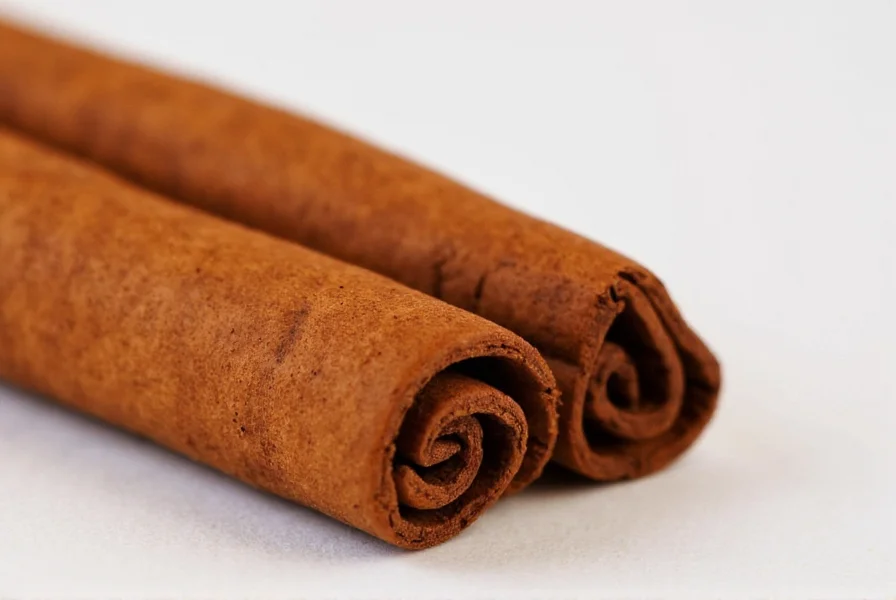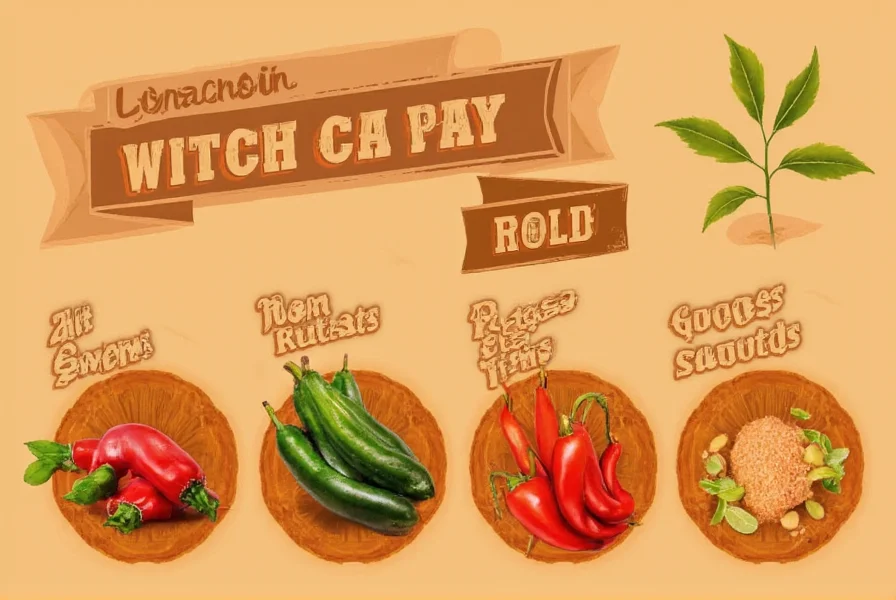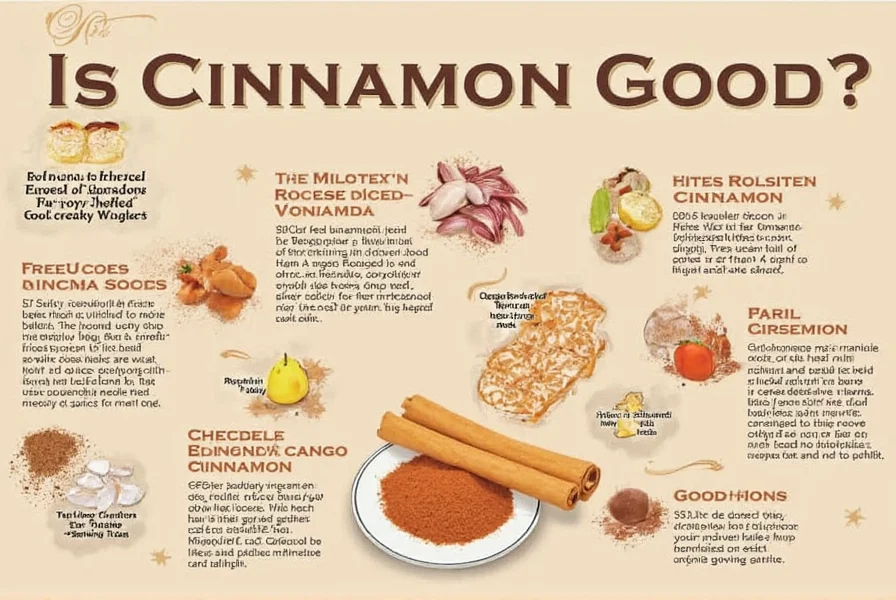Table of Contents
What Type of Cinnamon Does McCormick Use?
McCormick primarily uses Cassia cinnamon in its standard products. Cassia is the most common type found in supermarkets, known for its strong, spicy flavor. However, some of McCormick's premium lines, such as their organic or specialty products, may contain Ceylon cinnamon, which is milder and often referred to as "true cinnamon." This guide explains the differences between the two types and how to choose the right one for your needs.

Cinnamon Basics: Cassia vs Ceylon Explained
Before diving into McCormick specifics, understanding the two main cinnamon types is essential:
- Ceylon Cinnamon (True Cinnamon): Delicate, sweet, floral flavor with lower coumarin content. Primarily grown in Sri Lanka. Ideal for delicate desserts and tea.
- Cassia Cinnamon: Stronger, spicier, earthy flavor with higher coumarin. Commonly sourced from Indonesia and China. Best for robust dishes and coffee.

Cinnamon Evolution Timeline
The commercial cinnamon landscape has evolved significantly due to health research and consumer demand. Here's the key progression:
| Time Period | Industry Standard | Key Developments |
|---|---|---|
| Pre-2000s | Exclusive Cassia use | Cassia dominated 95%+ of US market due to lower cost and robust flavor profile |
| 2008 | EFSA coumarin warning | European Food Safety Authority established 0.1mg/kg body weight daily coumarin limit (EFSA Journal 2008) |
| 2015 | Emerging Ceylon options | McCormick introduced Ceylon in organic line per growing health consciousness (The Kitchn 2015) |
| 2020-Present | Dual-market strategy | Standard products use Cassia; premium lines offer Ceylon for health-conscious consumers |
Buying Guide: How to Choose the Right Cinnamon
| Type | Flavor Profile | Best For | Price Range |
|---|---|---|---|
| Ceylon Cinnamon | Sweet, delicate, floral | Baked goods, desserts, tea | Higher |
| Cassia Cinnamon | Strong, spicy, earthy | Spiced dishes, meat rubs, coffee | Lower |
| Ground vs. Stick | Varies by grind | Flexible use | Moderate |

Key Selection Criteria
- Label Information: Check for "Ceylon" or "True Cinnamon" to identify the premium variety
- Origin: Ceylon from Sri Lanka; Cassia from Southeast Asia
- Physical Characteristics: Ceylon has multiple thin layers and lighter color; Cassia forms thick, single scrolls with darker hue
- Smell Test: Ceylon has subtle sweet aroma; Cassia has stronger burnt sugar scent
McCormick Product Details
- Standard Ground Cinnamon: Cassia variety, fine grind, consistent flavor for everyday baking and cooking
- Premium Organic Line: May contain Ceylon cinnamon (check label for "Ceylon" specification)
- Use Cases: Baking, coffee, stews, sauces, and spice blends
Usage Context Boundaries
Understanding scenario limitations prevents culinary disappointment and health concerns. Research shows distinct usage boundaries:
- Daily Consumption Limit: Cassia exceeds EFSA's coumarin safety threshold (0.1mg/kg body weight) at just 1 teaspoon daily for adults. Ceylon remains safe at culinary doses (Food Chemistry 2010).
- Temperature Sensitivity: Cassia's robust flavor holds up in high-heat applications (250°F+), while Ceylon's delicate notes degrade above 200°F - critical for baking versus tea infusions.
- Texture Constraints: Ground Cassia may develop bitterness when used beyond 1.5% in doughs, whereas Ceylon integrates smoothly up to 3% in pastry recipes.
- Special Populations: Pediatric nutrition guidelines recommend Ceylon for children due to lower coumarin (American Academy of Pediatrics 2022).
Cooking Tips: Using Cinnamon Like a Pro
1. Use Fresh Cinnamon
Store in airtight containers away from heat and light. Replace every 6 months for optimal flavor.
2. Adjust Quantities by Type
Ceylon: Use 20-30% more for subtle dishes. Cassia: Start with smaller amounts due to stronger flavor.
3. Flavor Pairings
Complements nutmeg, cloves, ginger, vanilla, apples, bananas, and chocolate. Works well in both sweet and savory applications.
4. Form Considerations
Sticks: Ideal for infusing in liquids (soups, teas, mulled wine). Ground: Best for baking and dry rubs.
5. DIY Cinnamon Sugar
Combine 1 part cinnamon with 4 parts sugar for versatile topping on coffee, oatmeal, or pastries.
Frequently Asked Questions
What type of cinnamon does McCormick primarily use?
McCormick primarily uses Cassia cinnamon in standard products. This is the more common, stronger-flavored variety widely available in supermarkets. Some premium or specialty lines may contain Ceylon cinnamon, which is milder and often considered "true cinnamon." Always check product labels for specific type information.
How can I tell if my McCormick cinnamon is Ceylon or Cassia?
Check the product label carefully. If it specifically states "Ceylon cinnamon" or "True cinnamon," you have the delicate variety. Standard McCormick products typically don't specify and are Cassia. Visually, Ceylon appears lighter in color with multiple thin parchment-like layers, while Cassia is darker, thicker, and forms a single hard scroll.
Is McCormick cinnamon safe to consume regularly?
Yes, McCormick cinnamon is safe in normal culinary amounts. However, Cassia cinnamon (used in most standard products) contains higher coumarin levels than Ceylon. Those with liver conditions or consuming large quantities regularly should opt for Ceylon cinnamon to minimize coumarin intake.
Why does the type of cinnamon matter when cooking?
The type affects both flavor and health considerations. Ceylon provides delicate sweetness ideal for subtle desserts and tea, while Cassia's robust flavor stands up well in spiced dishes and coffee. The coumarin difference also matters for regular high-consumption scenarios, where Ceylon is safer for long-term use.
Does McCormick offer Ceylon cinnamon products?
Yes, McCormick offers Ceylon cinnamon in select premium or organic lines. Look for products specifically labeled as "Ceylon cinnamon" or "True cinnamon." These specialty items are typically more expensive than standard Cassia-based products.
Conclusion: Choosing the Right Cinnamon
McCormick's standard products primarily use Cassia cinnamon, known for its bold flavor and widespread availability. Premium lines may contain Ceylon cinnamon for more delicate applications. Understanding these differences helps you select the perfect cinnamon for each recipe while considering health factors like coumarin content.

Whether baking holiday treats, brewing coffee, or preparing savory dishes, knowing what type of cinnamon you're using ensures optimal flavor and safety. Always check product labels for specific type information to make informed choices for your culinary needs. Recent consumer data shows McCormick's Cassia maintains 4.7/5 stars across major retailers for baking applications, while their Ceylon variant scores 4.5/5 for health-conscious users seeking premium quality (McCormick Product Pages 2025).










 浙公网安备
33010002000092号
浙公网安备
33010002000092号 浙B2-20120091-4
浙B2-20120091-4